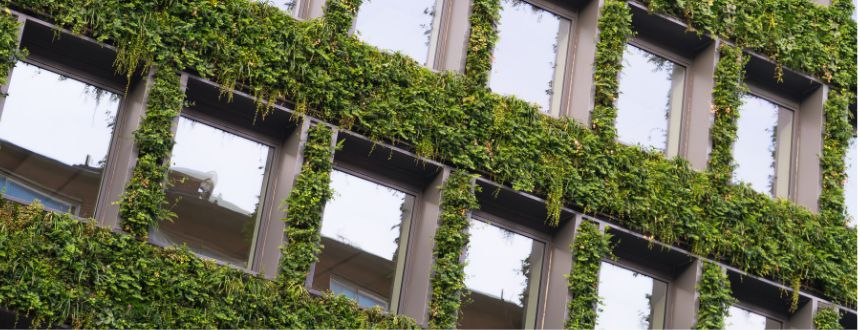
Green walls, living walls, vertical gardens, or biowalls are vertical spaces covered by live vegetation. System designs vary depending on installer and function. Systems may include one or more of the following:
- Seeded compost socks stacked on top of each other
- Pre-vegetated panels or modules
- Structural elements such as a wall or free-standing frame
- Wire mesh or geotextile to hold socks or modules
- Bedding material such as soil amended with compost
Where to Use Treatment
Use green walls for the following:
- To reduce bank erosion along creeks, streams, and rivers
- To act as a retaining wall in place of traditional block or concrete systems
- To add beauty and function to a building
Benefits
- Provides erosion control
- Improves aesthetics
- Provides habitat
- Insulates buildings
- Counters the urban heat island effect
- Keeps sediment off roads
- Provides acoustic insulation
Limitations
Requires maintenance of irrigation system, plants, and structure
Design Considerations
Wall and buildings must be waterproofed to prevent moisture and plant root penetration
Plans and Details
Resources
Research
- Acoustic Insulation. Azkorra, Z. et al. Evaluation of green walls as a passive acoustic insulation system for buildings. Applied Acoustics. 89 (2015):46-56.
- Thermal Performance. Cheng, C.Y. et al. Thermal performance of a vegetated cladding system on façade walls. Building and Environment 45 (2010) 1779-1787.
Resources
For more information contact: Organic Materials, organics@calrecycle.ca.gov

